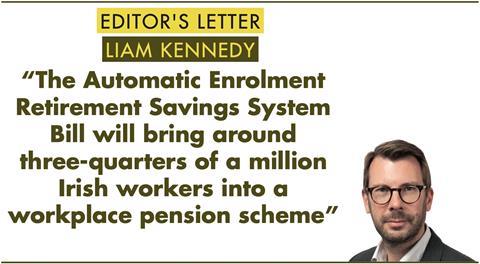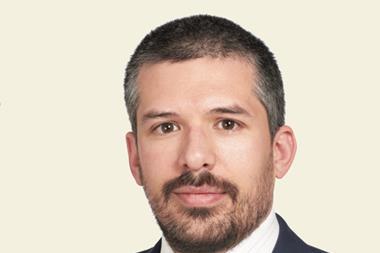Ireland stands a few policy steps away from the creation of a serious first and second-pillar pensions architecture that will improve the country’s international standing in terms of retirement provision.

The flaws in Ireland’s pension system are sizeable. Pension assets, according to the OECD, total €136bn or around 27% of GDP. In countries with mandatory workplace pension participation, like the Netherlands or Switzerland, the figure is higher than 100% of GDP.
In Ireland’s favour is a legacy of second-pillar pension coverage based on trust law. Ireland was endowed with a relatively large number of defined benefit schemes, as the UK has historically been. But it was also subject to the same pressures of international accounting rules and other issues that led to the tide of corporate paternalism in the early 2000s receding as enthusiasm waned for defined benefit schemes.
In the UK, Adair Turner’s 2002-06 Pension Commission provided a pragmatic bedrock of workplace pension policy recommendations that have proved remarkably resilient in the face of the turmoil that the country has faced since 2016. The policy of auto-enrolment has been embraced by all the main parties.
The UK’s NEST and framework of competing DC master trusts has proved successful, and participation in auto-enrolment has remained high.
According to Ireland’s Central Statistics Authority, workplace pensions coverage is patchy and poor in intergenerational terms, and too few of the country’s workers have access to a pension arrangement. While some 77% of workers in the 45-54 age group have access to a pension scheme, this falls to just 31% in the 20-24 age cohort. More than half say their employer does not offer a pension scheme.
Just under 60% of people with no pension coverage say the state pension will be their main source of income in retirement. Inertia and affordability are the main reasons for not organising additional pensions coverage.
After years of delay, Ireland looks set to rectify this. The Automatic Enrolment Retirement Savings System Bill will bring around three-quarters of a million Irish workers into a workplace pension scheme. Initially set at 1.5% apiece from employer and employee, contributions will step up from the fourth year to 3%, rising to 4.5% in year seven and to 6% in year 10.
Although auto-enrolment systems have had a patchy track record internationally, the success of the UK’s framework suggests take-up in Ireland should be high, although currently just under two-thirds of eligible workers say they would remain in the scheme.
The Irish government should prioritise a smooth administrative beginning for the planned Central Processing Authority. Writing in this issue of IPE, Aon’s Mairead O’Mahony suggests a 2025 set-up should be feasible.
Once it is established, auto-enrolment should boost Ireland’s institutional pension asset base over time, attracting opportunities and revenue for both domestic and international asset managers, as well as investment flow to domestic infrastructure and clean-energy projects.
As the Central Processing Authority comes to life, a public awareness building programme will be essential. More than 80% of the eligible workforce is unaware of auto-enrolment.
Other challenges within the pension system remain. The country’s second-pillar pension framework is poorly scaled with a proliferation of smaller schemes, although there are serious efforts by the country’s regulator, the Pensions Authority, to reduce the number of pension funds and trusts.
Fortunately, Ireland is in a good position fiscally and the proposed sovereign fund outlined recently by the finance minister, Michael McGrath, is a good example of pragmatic, long-term use of taxpayer resources. Pensions were a surprise political issue in the 2020 elections, so channelling tax receipts to cover future age-related spending in this way looks like a wise move.
The government proposes to channel 0.8% of GDP annually to the Future Ireland Fund from 2024 to 2035, by which time it could swell to as much as €100bn, according to the finance ministry. Some €4.3bn has been committed for 2024, together with €4bn of seed funding from the current National Reserve Fund. This should help provide political certainty around the future of the state pension.
Ireland ranks thirteenth out of 47 countries in the 2023 Mercer CFA Institute Global Pensions Index, which takes into account adequacy, sustainability and system integrity. Auto-enrolment and the planned sovereign fund should help propel the country out of the second international quartile and into the first. Successful implementation of the new workplace pension system, and a fair wind for the Future Ireland Fund, will be essential.
Liam Kennedy, Editor
liam.kennedy@ipe.com























No comments yet